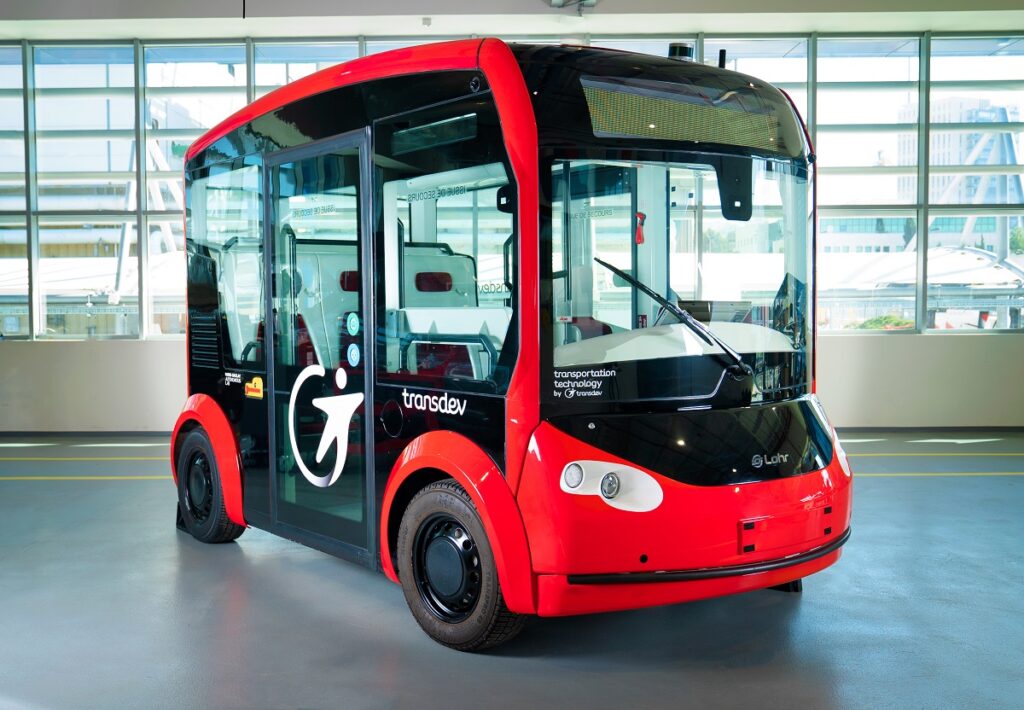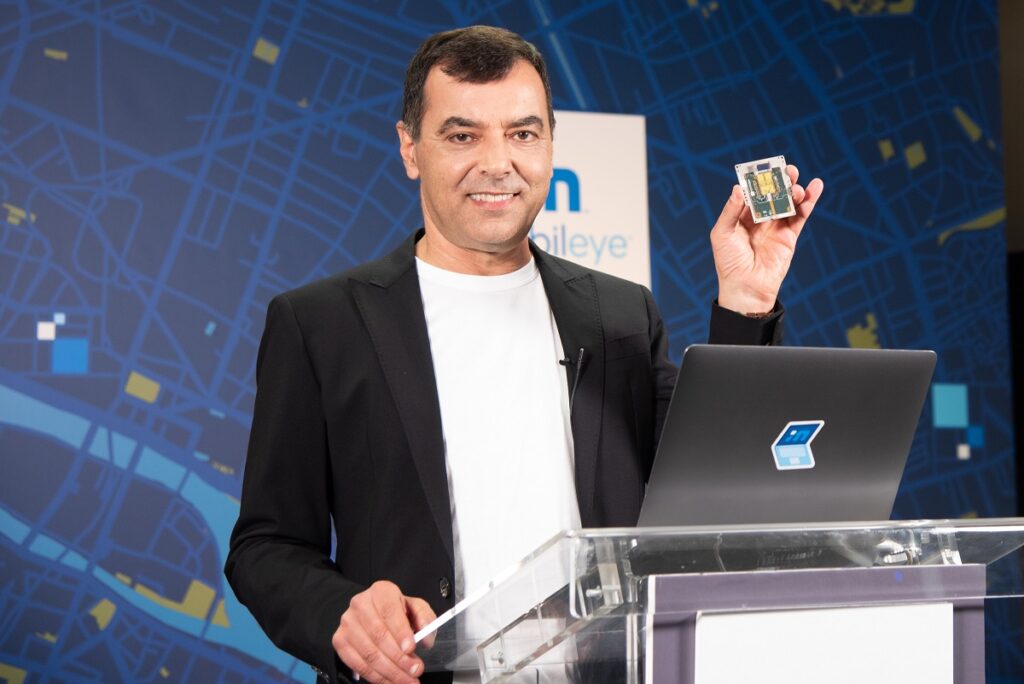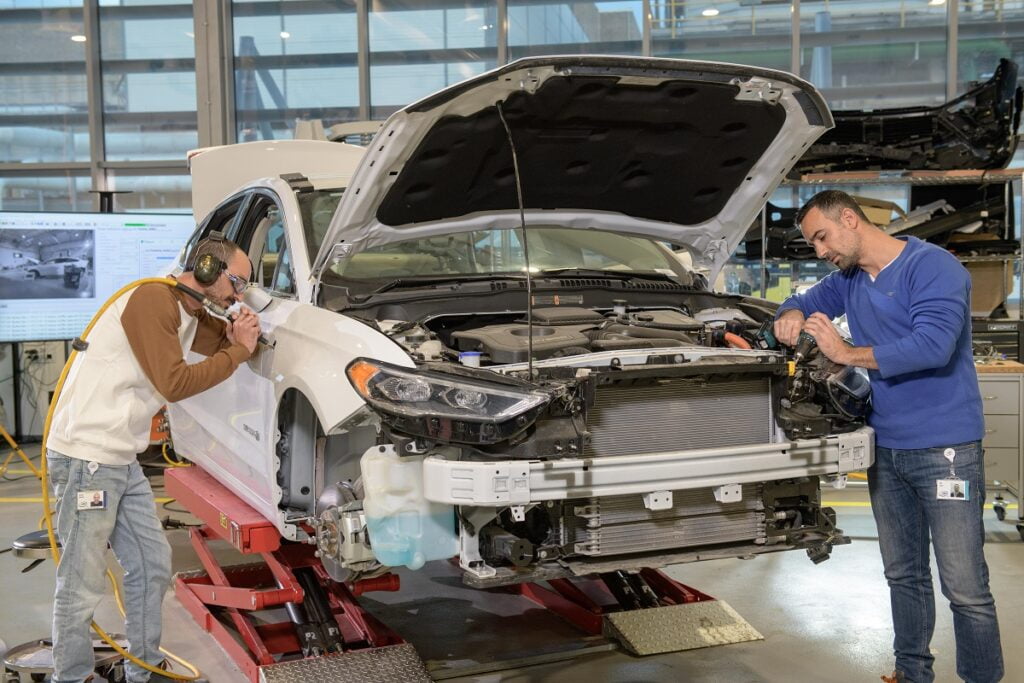Intel’s Jerusalem-based subsidiary Mobileye announced a new partnership with two French firms to jointly develop and deploy autonomous shuttles for public transportation in Europe in about two years.
Transdev Autonomous Transport System (ATS), part of Transdev Group dedicated to autonomous mobility solutions, joined mobility solutions manufacturer Lohr Group to form a strategic collaboration with Mobileye to integrate its AV (autonomous vehicle) technology into the Lohr-manufactured i-Cristal electric shuttle and roll out public transportation services powered by fleets starting in Europe, and then globally.
The electric i-Cristal shuttle features space for up to 16 passengers, can travel at speeds up to 50 kilometers (31 miles) per hour, and is accessible via a ramp.

On-road testing of the shuttles is set to start in France and Israel next year, with commercial services expected in 2023, the partners said in the announcement last week.
“Our collaboration with Transdev ATS and Lohr Group serves to grow Mobileye’s global footprint as the autonomous vehicle (AV) technology partner of choice for pioneers in the transportation industry,” said Johann Jungwirth, vice president of mobility-as-a-service at Mobileye. “Mobileye, Transdev ATS, and Lohr Group are shaping the future of shared autonomous mobility, and we look forward to bringing our self-driving solutions to regions all over the world.”
The three companies said they aim to improve the efficiency and convenience of mass transportation solutions and make autonomous mobility a daily reality in transportation networks, while lowering costs and improving customer experiences.
Patricia Villoslada, executive vice president of Transdev ATS, said the collaboration will enable the deployment of “autonomous vehicles in public transportation networks at scale, thanks to the combination of the complementary cutting-edge technologies and strong industrial expertise of the three partners.”
Marie-José Navarre, vice president of Lohr Group, indicated that the “common goal” was to “quickly provide to clients autonomous shuttles that could be easily and efficiently implemented in cities.”
Mobileye’s AV systems
Mobileye, which Intel acquired for USD 15.3 billion in 2017, has been working on a number of solutions to advance autonomous transportation and mobility offerings: an ADAS (advanced driver assistance system) based on proprietary software algorithms and EyeQ chips that use cameras to interpret the visual field, a lidar system-on-chip (SoC) for Mobileye to use in AVs starting in 2025, its Road Experience Management (REM) mapping technology to create high-definition maps of road infrastructures worldwide for AVs and smart cities, and a full-stack self-driving system for consumer AVs and robotaxi MaaS (mobility-as-a-service) developed together with Israeli mobility company Moovit, acquired by Intel last year.
At the CES 2021 virtual summit last month, Mobileye co-founder Amnon Shashua said the lidar SoC was “game-changing,” and would give Intel “a significant advantage” in delivering “fully digital and state-of-the-art signal processing, different scanning modes, rich raw detections, and multi-frame tracking.”

Mobileye has been focused on getting the technology down to an affordable cost, to enable global proliferation of autonomous driving, and its new systems are part of that journey. The company’s “solution starts with the inexpensive camera as the primary sensor combined with a secondary, truly redundant sensing system enabling safety-critical performance that is at least three orders of magnitude safer than humans.”
Mobileye’s says its self-driving system delivers safety via two core concepts: Mobileye’s formal Responsibility-Sensitive Safety model for the safety of the system’s decision-making, and a perception system featuring True Redundancy whereby two independent subsystems (cameras; radars and lidars) combine to enable robust perception.

The self-driving system can be deployed without geographical limitation thanks to Mobileye’s REM mapping technology through which a proprietary, crowdsourced AV map of the global road network is created and then continuously and automatically updated using data gathered from mass-market advanced driver-assistance systems, according to the statement.
Shashua revealed at CES that cars using Mobileye’s existing technology have already mapped nearly 1 billion kilometers globally, with more than eight million kilometers mapped daily. Mobileye previously said that data from 25 million vehicles is expected to be collected by 2025, in cooperation with various auto manufacturers.
Autonomous driving in more cities
Mobileye has been testing its technologies in Munich, having previously run testing operations across Israel, and recently unveiled plans to launch autonomous vehicle testing in Detroit, Tokyo, Shanghai, and Paris. New York is also in the cards, pending regulatory approval.

Mobileye is also expected to launch testing for an autonomous taxi (robotaxi) mobility solution in Daegu, South Korea, later this year, and will target a commercial launch for robotaxis in Osaka in 2023 together with Willer, one of the largest transportation operators in Japan.
Last September, Mobileye announced that it would begin setting up the infrastructure to test autonomous vehicles in Dubai and hoped to roll out a full MaaS offering, including self-driving taxis and smart city solutions, also by 2023.
This article first appeared in NoCamels, which covers innovations from Israel for a global audience.
